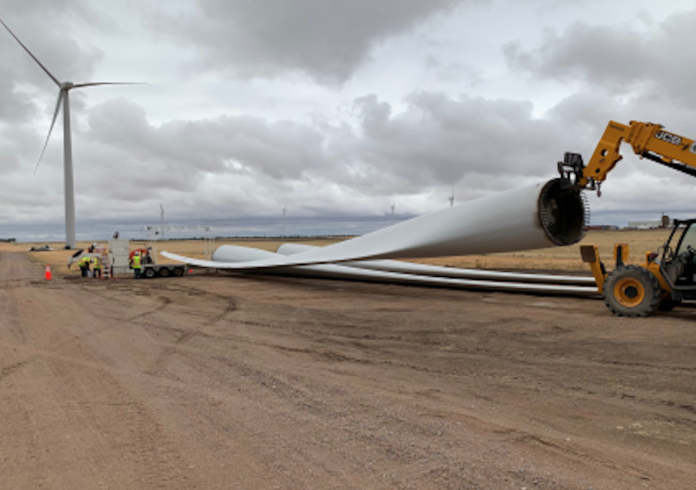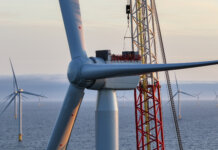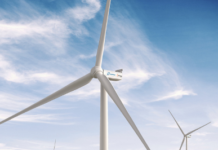GE Renewable Energy has signed a multi-year agreement with Veolia North America (VNA) to recycle blades removed from its U.S.-based onshore turbines during upgrades and repowering efforts.
Veolia will process the blades for use as a raw material for cement, utilizing a cement kiln co-processing technology. VNA has a successful history of supplying repurposed engineered materials to the cement industry. Similar recycling processes in Europe have been proven to be effective at a commercial scale.
As a part of the agreement, blades that have been removed from turbines will be shredded at VNA’s processing facility in Missouri and then used as a replacement for coal, sand and clay at cement manufacturing facilities across the U.S. On average, nearly 90% of the blade material, by weight, will be reused as a repurposed engineered material for cement production. More than 65% of the blade weight replaces raw materials that would otherwise be added to the kiln to create the cement – and about 28% of the blade weight provides energy for the chemical reaction that takes place in the kiln.
“Sustainable disposal of composites such as wind turbine blades has been a challenge, not only for the wind turbine industry but also for aerospace, maritime, automotive and construction industries,” says Anne McEntee, CEO of GE Renewable Energy’s Digital Services business. “VNA’s offering provides the opportunity to scale up and deploy quickly in North America, with minimum disruption to customers and significant benefit to the environment.”
Wind turbine blades may be replaced through turbine improvement or repowering efforts – when specific elements of the turbine are upgraded to improve the efficiency and lifespan of the turbine – without replacing the entire machine. Longer, lighter blades help the turbine to generate more energy every year, providing even more renewable energy to their end customers.
An environmental impact analysis conducted by Quantis U.S. found that the net effect of blade recycling through cement kiln co-processing is positive in all categories. Compared to traditional cement manufacturing, blade recycling enables a 27% net reduction in CO2 emissions from cement production and a 13% net reduced water consumption. In addition, a single wind turbine blade that weighs 7 tons recycled through this process enables the cement kiln to avoid consuming nearly 5 tons of coal, 2.7 tons of silica, 1.9 tons of limestone and nearly a ton of additional mineral-based raw materials.
Largely due to the avoided coal consumption, this type of blade recycling also has a net-positive environmental impact in the categories of human health, ecosystem quality and resource consumption. The resulting cement has the same properties and performance as cement manufactured using traditional means, meeting all applicable ASTM standards.




